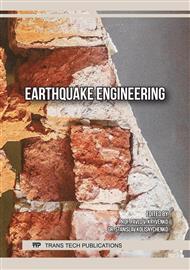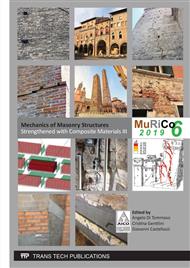p.359
p.365
p.371
p.377
p.385
p.392
p.398
p.404
p.412
Composite Materials with Natural Fiber NFRC on Inorganic Matrix for Seismic Reinforcement of Masonry Structures
Abstract:
Composite materials with carbon, aramidic, glass and lately basalt fibers with a polymeric or cementitious matrix FRP or FRC, are frequently used for the seismic reinforcement of masonry buildings. The fibers of such composites are synthetic, and they have high mechanical characteristics. However, their cost is very expensive and do not belong to the eco compatible products. Moreover, for the making of these fibers an elevated amount of energy is needed for reaching the temperature relative to the production process.An alternative to the use of such fibers may be recurring to natural eco compatible fibers for which the cost is much lower, and they do not need a special processing. Using such fibers in an inorganic cementitious matrix, an improvement of the mortar or of the plaster quality is obtained, giving to them also an adequate ductility.In order to make the composite material, short fibers immersed in the cementitious mortar are used; the composite material can be represented using the acronym NFRC (Natural Fiber Reinforced Composite).Among the different types of fibers that can be used, there is the short fibers derivate from the bamboo plant that are available under the form of yarns or threads.The scope of this paper consists in the definition of the optimal volumetric ratio for the NFRC composite, and the length of the fiber compatible with the workability and the resulting mechanical characteristic.
Info:
Periodical:
Pages:
385-391
Citation:
Online since:
August 2019
Authors:
Keywords:
Price:
Сopyright:
© 2019 Trans Tech Publications Ltd. All Rights Reserved
Share:
Citation:



